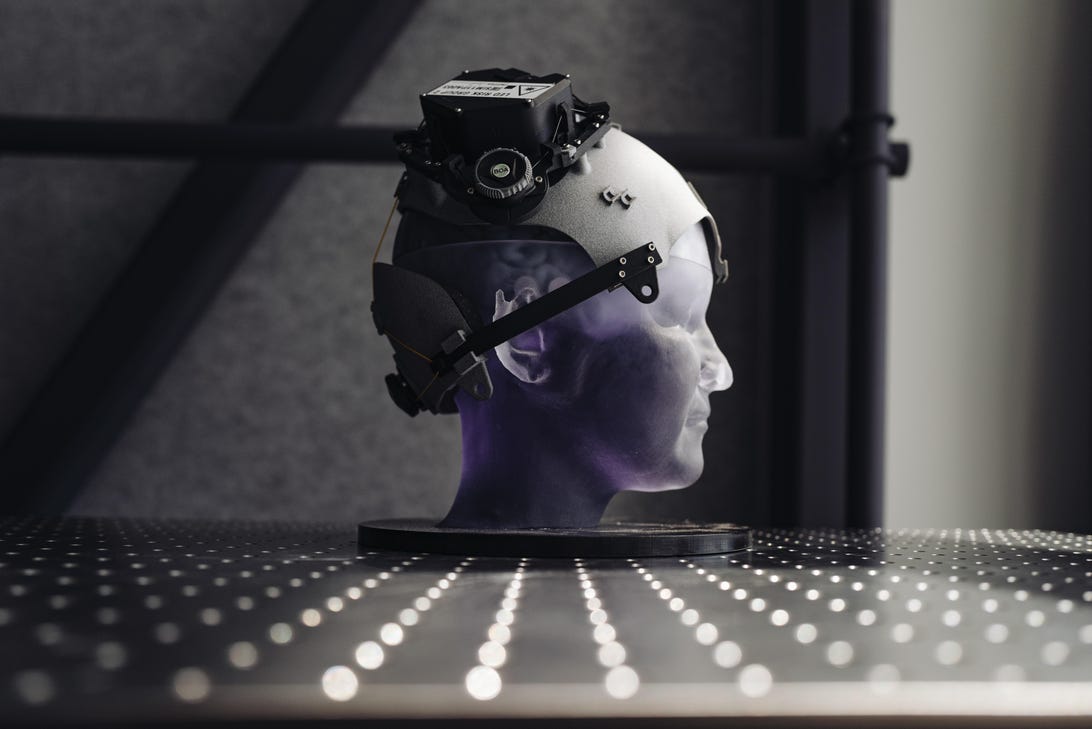The text under the picture should have been the patients vocal cord control.
Brain implant turns thoughts into words to help paralyzed man 'speak' again
The UCSF research taps a brain-computer interface to turn attempted speech into typing. It's funded by Facebook, which is shifting its own focus on neural tech.
Facebook's work in neural input technology for AR and VR looks to be moving in a more wrist-based direction, but the company continues to invest in research on implanted brain-computer interfaces. The latest phase of a years-long Facebook-funded study from UCSF, called Project Steno, translates attempts at conversation from a speech-impaired paralyzed patient into words on a screen.
"This is the first time someone just naturally trying to say words could be decoded into words just from brain activity," said Dr. David Moses, lead author of a study published Wednesday in the New England Journal of Medicine. "Hopefully, this is the proof of principle for direct speech control of a communication device, using intended attempted speech as the control signal by someone who cannot speak, who is paralyzed."
Moses clarified that the work will aim to continue beyond Facebook's funding phase and that the research still has a lot more work ahead. Right now it's still unclear how much of the speech recognition comes from recorded patterns of brain activity, or vocal utterances, or a combination of both.
Moses is quick to clarify that the study, like other BCI work, isn't mind reading: it relies on sensing brain activity that happens specifically when attempting to engage in a certain behavior, like speaking. Moses also says the UCSF team's work doesn't yet translate to non-invasive neural interfaces. Elon Musk's Neuralink promises wireless transmission data from brain-implanted electrodes for future research and assistive uses, but so far that tech's only been demonstrated on a monkey.

Facebook Reality Labs' BCI head-worn device prototype, which didn't have implanted electrodes, is going open-source.
FacebookMeanwhile, Facebook Reality Labs Research has shifted away from head-worn brain-computer interfaces for future VR/AR headsets, pivoting for the near future to focusing on wrist-worn devices based on the tech acquired from CTRL-Labs. Facebook Reality Labs had its own non-invasive prototype head-worn research headsets for studying brain activity, and the company has announced it plans to make these available for open-source research projects as it stops focus on head-mounted neural hardware. (UCSF receiving funding from Facebook but no hardware.)
"Aspects of the optical head mounted work will be applicable to our EMG research at the wrist. We will continue to use optical BCI as a research tool to build better wrist-based sensor models and algorithms. While we will continue to leverage these prototypes in our research, we are no longer developing a head mounted optical BCI device to sense speech production. That's one reason why we will be sharing our head-mounted hardware prototypes with other researchers, who can apply our innovation to other use cases," a Facebook representative confirmed via email.
Consumer-targeted neural input technology is still in its infancy,
however. While consumer devices using noninvasive head or wrist-worn
sensors exist, they're far less accurate than implanted electrodes right
now.

No comments:
Post a Comment